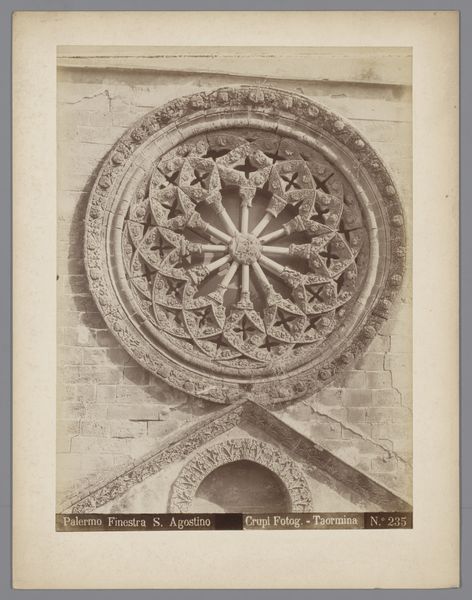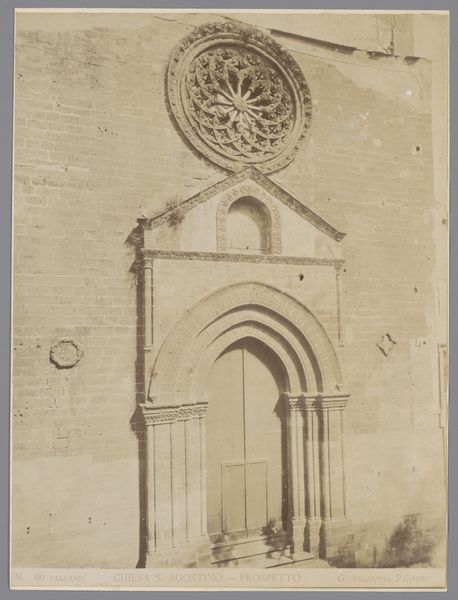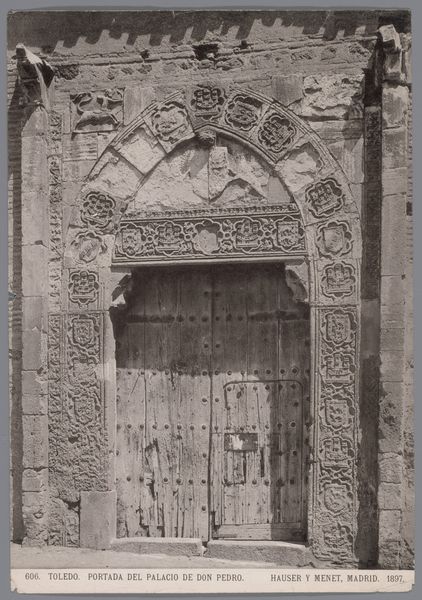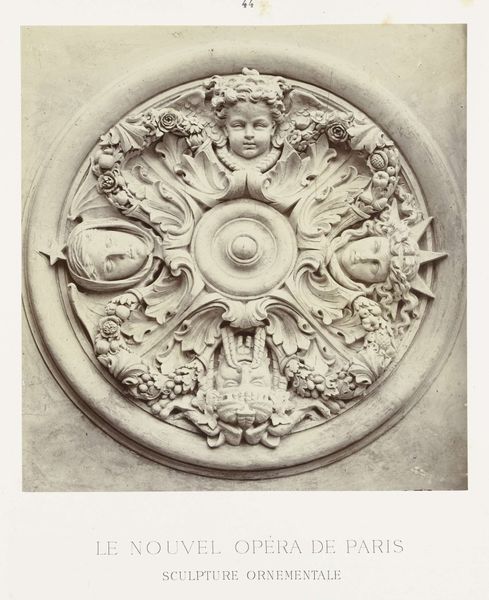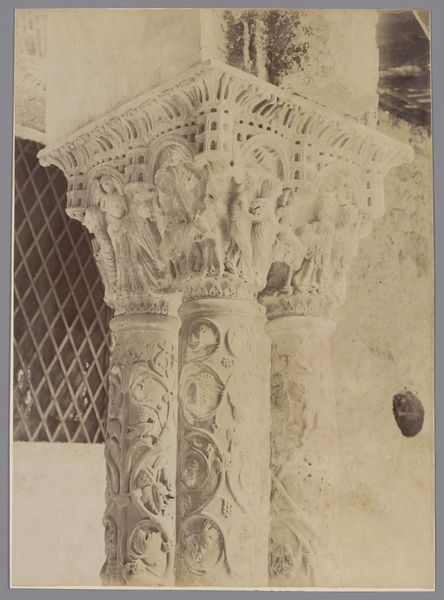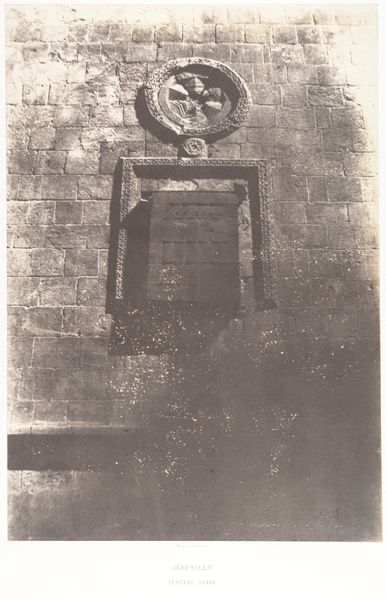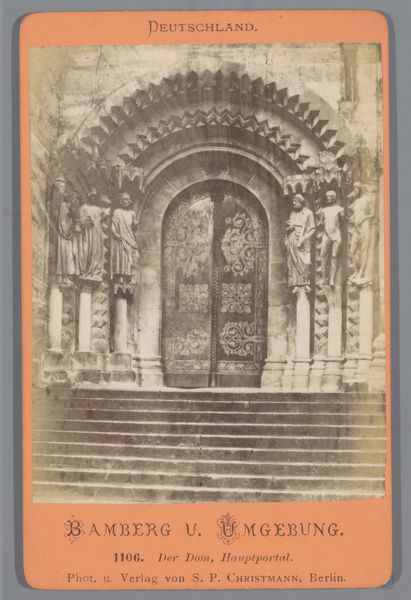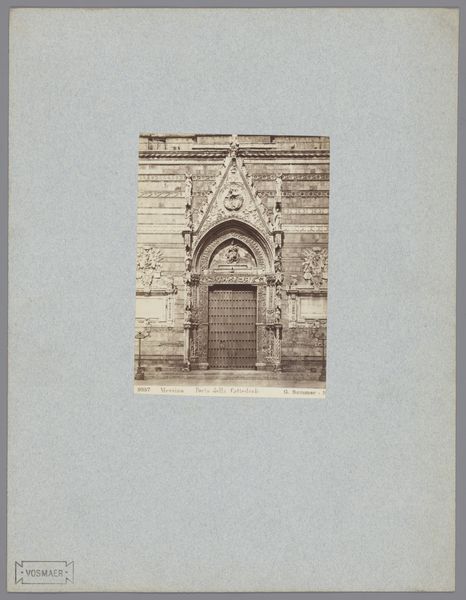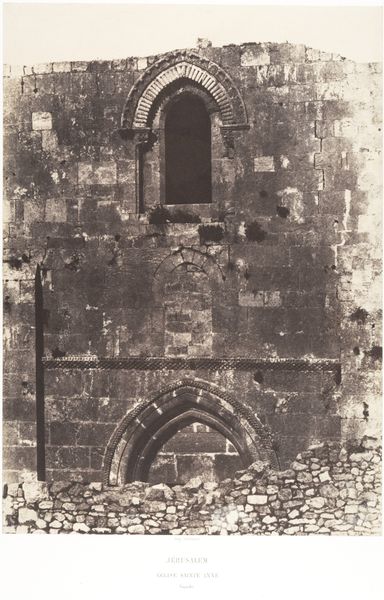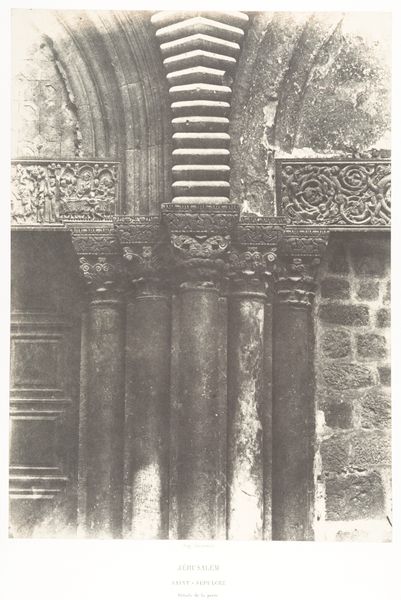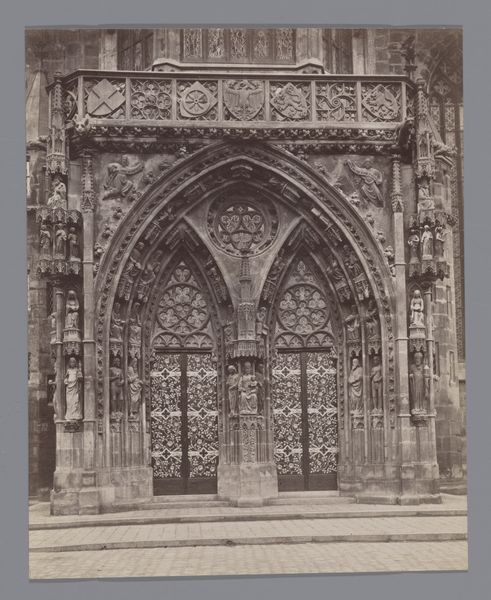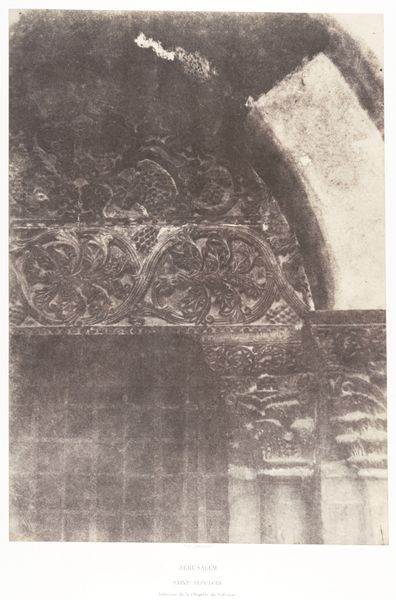
Roosvenster boven het voorportaal van Sant'Agostino te Palermo, Sicilië 1857 - 1914
0:00
0:00
print, photography, architecture
# print
#
stone
#
sculpture
#
landscape
#
photography
#
romanesque
#
architecture
#
statue
#
monochrome
Dimensions: height 255 mm, width 200 mm, height 256 mm, width 200 mm
Copyright: Rijks Museum: Open Domain
Curator: Giorgio Sommer captured this intriguing view of the rose window above the portal of Sant'Agostino in Palermo, Sicily, sometime between 1857 and 1914. Editor: It's imposing, yet seems somehow muted in tone. The grayness adds a weight, almost like witnessing a historical injustice, doesn't it? Curator: Absolutely. Sommer's perspective accentuates the Romanesque character of the facade, those repeated geometric forms. Notice the symbolic weight in the rosette; its circular form resonates with notions of wholeness and divine light. Editor: I am also wondering about its political implications. Sicilian Romanesque architecture reflects a fusion of Norman, Arab, and Byzantine influences, hinting at the complexities of power, cultural interaction and resistance, no? Each carved detail holds an identity shaped by conquest and assimilation. Curator: I hadn't considered the syncretism so overtly. However, I see the repeated quatrefoil motifs in the rose window speaking to balance and perhaps even to a celestial harmony in design. The photograph makes the viewer confront cultural memories embodied in stone. Editor: But harmony for whom? Shouldn't we acknowledge the socio-political stratification reflected in the architecture itself? Who had access to such spaces? Curator: A valid point. The image serves as a reminder of those power dynamics but consider also the survival of shared imagery over time. These visual signifiers carry coded meanings, reflecting human continuity in a way words simply can't. Editor: Ultimately, it stands as a reminder that even buildings are subject to ongoing struggles over identity and interpretation. Curator: I see the appeal to how the rose window itself invites you to meditate on the past, while simultaneously questioning its legacy. Editor: That makes this artwork not only about preservation, but the political narratives that have shaped it over time.
Comments
No comments
Be the first to comment and join the conversation on the ultimate creative platform.
